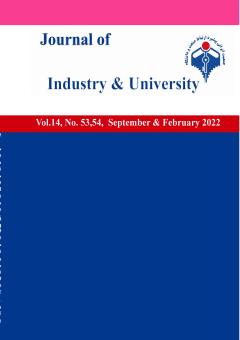Identification and analysis of the requirements for the use of sustainable development frameworks in the infrastructure projects of the intercity transport sector (case study: projects of the transport sector of the Khorasan Razavi General Road and Urbanization Department)
Subject Areas : Specialebrahim alamatian 1 * , fatemeh kashizadeh sharbaf 2 , mohamad mehdi rashidian 3 , mohamadreza shakiba 4 , ehsan fereshtepour 5
1 - Assistant Professor of Civil Engineering Department, Khavaran Institute of Higher Education, Mashhad, Iran
2 - Senior expert in project and construction management, Iran
3 - Civil expert, General Directorate of Roads and Urban Development, Iran
4 - Master's student in Urban Management, Ferdowsi University of Mashhad, Mashhad, Iran
5 - PhD student in Civil Engineering, Islamic Azad University, Mashhad Branch, Mashhad, Iran
Keywords: Sustainable Development, Sustainability Assessment System, Sustainable Transportation, Envision,
Abstract :
Today, issues such as population growth and climate change have greatly affected societies in the optimal use of natural resources while maintaining and improving the quality of life. Meanwhile, infrastructures are at the heart of this challenge. In such conditions, building infrastructure facilities and improving the quality of existing infrastructures is a critical issue, and Iran is not exempt from these conditions. In this regard, it is necessary to find ways to minimize the negative effects of development on the environment and affected communities. Sustainability rating and evaluation systems can play an important role in moving towards sustainability. Therefore, the current research aims to respond to the need to extend the life span and improve the performance quality of the infrastructure in Iran, and has sought to evaluate the infrastructure of the inter-city transportation sector from the perspective of sustainability. The evaluation is based on the Envision evaluation system for the projects of the Khorasan Razavi Department of Roads and Urban Development. The collected data were analyzed using SPSS. According to the results, 5 indicators of quality of life, project management, resource allocation, natural environment and climate and resilience are important. The analysis of the obtained data showed that among the 14 sub-indicators of the evaluation system, for the projects of the General Administration of Roads and Urbanization of Khorasan Razavi, the sub-indicators of economy and society have the most impact and the sub-indicator of pollutants have the least impact. Finally, the criteria of each of these sub-indices were prioritized.
1. مافی، عزت الله و داوری نژاد مقدم، مسعود،1391، شناخت ابعاد پایداری و ارتقا آن به منظور دستیابی به توسعه پایدار شهری،دومین کنفرانس ملی توسعه پایدار و عمران شهری،اصفهان
2. طاهریان، گلاره و حسینی نورزاد، حسین، 1400، بومیسازی و ارائه چارچوب ارزیابی پایداری پروژههای زیرساختی در ایران برمبنای چارچوب Envision، پژوهش های زیرساختهای عمران. دوره 8، شماره ۱.
3. Griffiths K, Bullough S, Shibli S, Wilson J. The impact of engagement in sport on graduate employability: implications for higher education policy and practice. International journal of sport policy and politics. 2017 Jul 3;9(3):431-51.
4. Yunus MM, Osman WS, Ishak NM. Teacher-student relationship factor affecting motivation and academic achievement in ESL classroom. Procedia-Social and Behavioral Sciences. 2011 Jan 1;15: 2637-41.
5. Griffiths K, Boyle C, Henning TF. Infrastructure sustainability rating tools–exploring opportunities for the engineering profession based on international research. Australian journal of civil engineering. 2020 Jan 2;18(1):18-28.
6. Ozturk M. Comparison of Sustainability Assessment Tools for Highway Projects. California State University, Long Beach; 2019.
7. Hubbard SM, Hubbard B. A review of sustainability metrics for the construction and operation of airport and roadway infrastructure. Frontiers of Engineering Management. 2019 Sep; 6:433-52.
8. Griffiths KA, Boyle C, Henning TF. Comparison of project performance assessed by infrastructure sustainability rating tools. In Proceedings of the Institution of Civil Engineers-Engineering Sustainability 2018 Jul 12 (Vol. 172, No. 5, pp. 232-240). Thomas Telford Ltd.
9. Diaz-Sarachaga JM, Jato-Espino D, Alsulami B, Castro-Fresno D. Evaluation of existing sustainable infrastructure rating systems for their application in developing countries. Ecological indicators. 2016 Dec 1;71: 491-502.
10. ISI, Envision Guidance Manual(v3), https://sustainableinfrastructure.org
11. Heiko AV. Consensus measurement in Delphi studies: review and implications for future quality assurance. Technological forecasting and social change. 2012 Oct 1;79(8):1525-36.
12. Basin M, Rodriguez‐Gonzalez J, Fridman L, Acosta P. Integral sliding mode design for robust filtering and control of linear stochastic time‐delay systems. International Journal of Robust and Nonlinear Control: IFAC‐Affiliated Journal. 2005 Jun;15(9):407-21.

